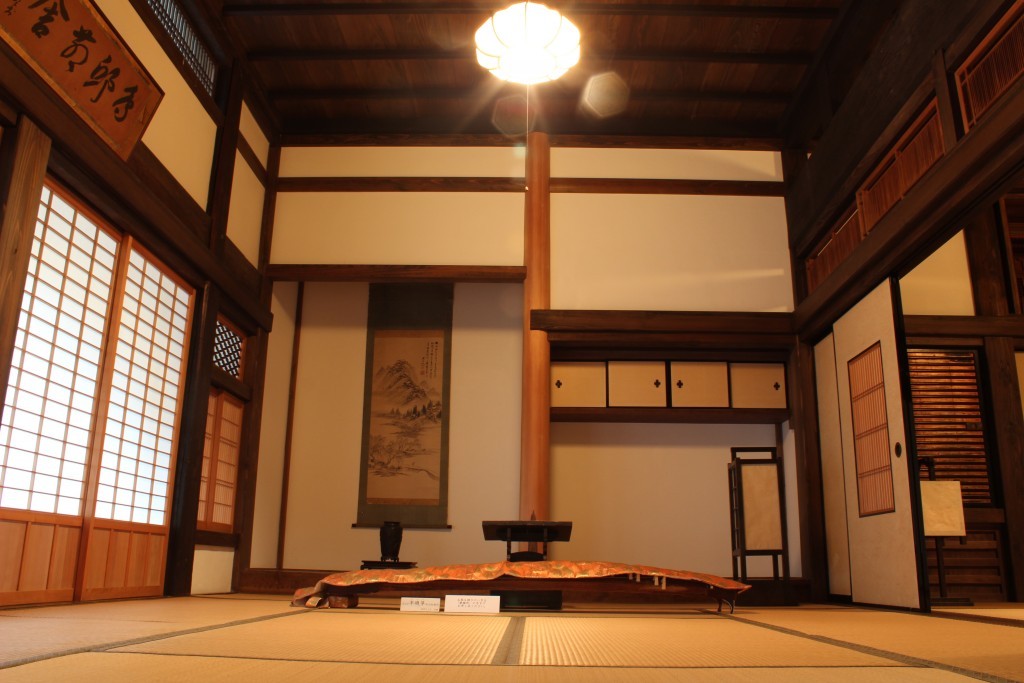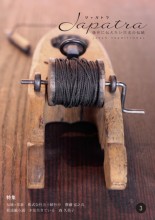A Kominka is an old Japanese folk house, which is basically structured with wood, clay, straw and bamboo. It has few walls, a high floor and a high ceiling. These features are due to the typical Japanese climate: hot summers with high humidity. By planting trees in the garden and adding to these features in other ways, Kominka somehow calm the effects of the summer heat and can welcome in a cool breeze, providing dwellers with a comfortable living space.
In harmony with Mother Nature, and in order to enjoy the beauty of Japan’s four seasons, Kominka were built of natural materials that can be reused and recycled. In that sense, Kominka houses are not only ecological and economical, but also extremely sophisticated.
“日本の伝統的な住まいは「古民家」と呼ばれます。壁が少なく床下も高く、庭に植木を植えることで涼しい風が夏場入ってくる夏場気温が高く湿度が高い日本の気候風土に対応した過ごしやすい住まいです。四季を楽しめるように自然と相対するのではなく、自然と共に生活をする自然素材で循環が可能な資材で建てられたエコで洗練された住まいです。”
By living in a Kominka together with three generations, children can learn from the wisdom of their grandparents. (Regrettably, the current situation in Japan is changing, and the trend toward the nuclear family is advancing.) Thanks to the open spaces in a Kominka, neighbors can come and go with ease and communication is facilitated, leading to kids being raised and watched over by warm-hearted people from the whole community.
“三世代が同居するため祖父祖母から子ども達は生活しながら様々なことを学びます。また壁の少ない開放的な住まいのため近所の人とも交流が盛んであり、子ども達は地域の人からも見守られて育ちます。”

It is often remarked that there is a low crime rate in Japan and that people seem to live relatively prosperous lives. They give priority to the group over the individual and devote themselves to helping each other. This may be the root of Japan’s repeated revival in the aftermath of past disasters. Their attitude and good manners in the face of calamity were evident just after the Great North Eastern Earthquake of 2011 as well as after World War II.
Japan is also known as a country of natural disasters, such as typhoons and earthquakes. Interestingly, the intelligent design of Kominka houses meant that they were able to withstand the huge power of such natural disasters. For instance, a heavy roof is erected on the top of the house so that it is not blown off in a typhoon. Kominka houses can also absorb the trembling power of an earthquake, thanks to the techniques of the wood joinery. These techniques were later adopted in the design of modern high-rise buildings. They will swing slowly and widely when a big earthquake strikes. This movement can eventually prevent buildings from collapsing and keep them standing. This is what is called “a quake-absorbing structure.”
“日本は犯罪の少ない経済的にも豊かな国ですが、これは戦後の経済復興だけでなく、お互いがお互いを助け合う相互扶助という考え方があるからかもしれません。また、台風や地震などの自然災害もありますが、それに対応した造りです。屋根を重たくして台風で家が飛ばないようになっていますし、地震が発生しても建物がゆっくり揺れることで地震の力を上手に逃がし倒壊しない高層ビルなどに用いられているのと同じ免震的な建物です。”

Horyuji Temple was built in Nara prefecture 1,400 years ago, and has been registered in the Guinness Book of Records as the world’s oldest surviving wooden structure. Some Kominka houses are also tough enough to survive as long as 1,000 years, and are called “Sennen-ya.”
Nowadays, however, the number of Kominka has been decreasing. People tend to put more value on cars or the latest hi-tech TV sets. Although their Kominka may still be structurally sound and inhabitable, there is a tendency amongst owners to tear them down and replace them with modern houses. It is regrettable that only 1,200,000 Kominka now remain all over Japan.
“ギネスに登録されている世界最古の現存する木造の建物は奈良県にある法隆寺というお寺で1400年経っていますが、古民家もそれに劣らず「千年家」と呼ばれる古いものある寿命の長い住まいです。しかし現在、車やテレビなど最先端の技術を持つ日本人は古いものより新しいものの方が価値があると思う人が増えており、まだ住めるのに壊して新しい家を建てることが多く、残念ながら数が減ってきています。我々の調査では全国に「古民家」は120万棟しか残っていません。”

Information Magazine Japatra
Our organization is trying to arrest this trend. We are trying to raise the numbers of professional estimators of Kominka in the hope of conserving this valuable cultural heritage throughout Japan.
When speaking of Japan, most people may think of anime, Japanese traditional cuisine, kimono, earthenware, castles, temples and shrines. We would be gratified if people added Kominka to this list. Japanese old folk houses are the most ecological and sophisticated residences and are replete with the wisdom of past generations.
The Organization for the Restoration of Kominka is willing to help and support you if you are interested in Kominka.
Please feel free to contact us. Thank you.
“私たちは伝統的な古民家を守るために「古民家鑑定士」という資格者を育成する団体で、全国各地で地域性のある様々な古民家を地域の人たちと協力して後世に残すための活動をしています。
日本といえば、サブカルチャーとしてのアニメや、伝統的なものでいえば和食が世界遺産に登録され、着物や焼物(瀬戸物などの陶器)、お城や、お寺や神社などが有名ですが、「古民家」という素晴らしい住まいがあることをぜひ知ってください。もしあなたが日本に来て住むのなら我々の団体は日本全国に支部と仲間がいるので相談ください。あなたが日本の伝統的な住まいに住めるようにサポートさせていただきます。”
Translated into English by Tanabe Takumi – Keio Shonan Fujisawa
> contact us.